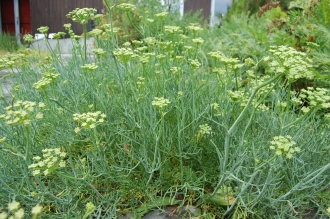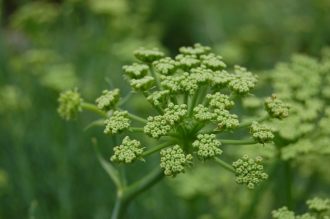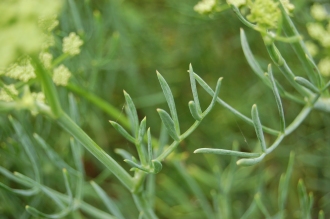Position: Full sun to partial shade
Flowering period: Late spring to mid summer
Soil: Moist, well drained
Eventual Height: 1.8m
Eventual Spread: 1.8m
Hardiness: 5a, 5b, 6a, 6b, 7a, 7b, 8a, 8b
Family: Apiaceae
Molopospermum peloponnesiacum is a deciduous herbaceous perennial with an open spreading habit. Its mid green leaves are alternate and deeply lobed with a toothed margin. Its green/ cream flowers are terminal compound umbels. Its fruit are achenes.
Molopospermum peloponnesiacum, commonly known as Striped Hemlock, Couscouil, Wild Angelica, or Coscoll (in Catalan), is native to the southern Alps, the Pyrenees and parts of Greece. In its native habitat it grows at woodland edges, glades and open alpine conditions.
The etymological root of the binomial name Molopospermum is from the Greek molops meaning ‘a stripe’ or ‘mark of a stripe’ and sperma meaning ‘seed’. Peloponnesiacum is from the Latin meaning of or from Peloponnesia, in Greece.
The landscape architect may find Molopospermum peloponnesiacum useful as an attractive plant suitable for dappled dry woodland planting.
Ecologically, Molopospermum peloponnesiacum flowers are attractive to some pollinating insects.
Molopospermum peloponnesiacum prefers moist, humus rich, well-drained soils. It tolerates most pH of soil.
Molopospermum peloponnesiacum requires little maintenance. The foliage may be cut back in late summer/ early winter to keep a tidy appearance.












